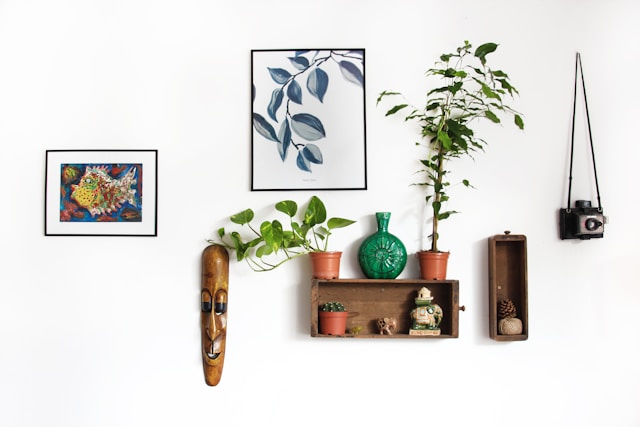Looking to breathe new life into a dull room? A DIY accent wall might be exactly what your space needs. With a bit of creativity and a weekend’s worth of effort, you can completely transform the feel of any room no major renovation required.
Whether you’re updating your bedroom, living room, or entryway, learning how to make an accent wall is one of the easiest and most rewarding home improvement projects. This guide will walk you through everything from choosing a design to installing it, with plenty of tips to help you stay on budget and on track.
What Is an Accent Wall and Why Make One?
An accent wall is a single wall in a room that differs in color, material, or texture from the other walls. It’s often used to highlight a specific area or to create a focal point without overwhelming the space.
So why do it?
-
It adds visual interest and depth to a room.
-
It’s cost-effective compared to full-room renovations.
-
It allows for personal expression in your interior design.
-
It’s a manageable project even for beginner DIYers.
Choose the Right Wall
When planning a diy accent wall, the first step is choosing the best wall to highlight. Typically, it’s the wall that first grabs your attention when you enter the room or the one behind the main piece of furniture like a bed, sofa, or dining table.
Consider the following:
-
Focal point: Choose a wall that already naturally draws the eye.
-
Lighting: Good lighting enhances textures and colors.
-
Room balance: Avoid walls with too many windows or doors.
Popular locations for accent walls include:
-
Living rooms (behind the sofa or TV)
-
Bedrooms (behind the bed)
-
Entryways or hallways
-
Dining rooms and home offices
Select Your Style and Material
There are endless accent wall ideas to suit every taste and budget. Here are some of the most popular styles and materials:
1. Paint
The simplest and most budget-friendly method. Try:
-
A bold solid color
-
Geometric shapes or color blocking
-
Stripes or ombré effects
2. Wallpaper
Modern wallpaper is easier than ever to install and remove. Consider:
-
Peel-and-stick wallpaper for renters
-
Floral, geometric, or metallic patterns
-
Mural-style wallpapers for dramatic impact
3. Wood Paneling
A classic look that brings warmth and texture. Styles include:
-
Shiplap (great for a rustic or farmhouse vibe)
-
Board and batten
-
Reclaimed wood planks
4. Textured Materials
For a unique, high-impact look:
-
Faux brick or stone veneer
-
Fabric or upholstered panels
-
3D wall panels or tiles
Match the material and design to your overall home aesthetic, whether it’s modern, minimalist, boho, traditional, or eclectic.
Gather Materials and Tools
Before diving in, make sure you have everything you need. Your supply list will vary depending on the type of wall design, but here are some common essentials:
For painted accent walls:
-
Paint and primer
-
Rollers, brushes, painter’s tape
-
Drop cloth and sanding block
For wood or panel walls:
-
Wood planks or panels
-
Nails, screws, or adhesive
-
Level, measuring tape, and saw
-
Caulk and paint or stain (optional)
For wallpapered walls:
-
Wallpaper (plus 10–15% extra)
-
Smoothing tool and utility knife
-
Adhesive (if not peel-and-stick)
Safety tips:
-
Use proper ventilation for paints and adhesives
-
Wear gloves, eye protection, and a dust mask when cutting materials
How to Make an Accent Wall
Step 1: Prep the Wall
-
Clean the surface and patch any holes.
-
Sand rough spots and remove dust.
-
Use painter’s tape to protect trim and adjoining walls.
Step 2: Plan Your Layout
-
For wood or panel designs, mark stud lines and layout guides with a pencil.
-
For paint or wallpaper, measure and level the design before applying.
Step 3: Apply Your Materials
-
Paint: Start with primer if needed. Then apply your chosen design in thin, even coats. Let each coat dry fully.
-
Wallpaper: Start in the center or corner. Smooth carefully to avoid bubbles. Trim excess.
-
Wood panels: Attach using a level to keep lines straight. Secure with nails or adhesive. Fill gaps or holes with caulk or wood filler.
Step 4: Add Finishing Touches
-
Touch up paint or caulk edges.
-
Reinstall outlet covers or baseboards.
-
Style the space with artwork, lighting, or furniture that complements your wall.
Tips for Success
-
Measure twice, cut once especially for woodwork or patterns.
-
Test your materials before full application (e.g., sample paint swatches or wallpaper patches).
-
Be patient let paint dry completely between coats and give adhesive time to set.
Budgeting and Time Estimations
Creating a diy accent wall doesn’t have to be expensive. Here’s a rough guide:
| Material Type | Estimated Cost | Time Required |
|---|---|---|
| Paint | $50–$150 | 1 day |
| Wallpaper | $100–$300 | 1–2 days |
| Wood paneling | $150–$500+ | 1–2 days or weekend |
| Faux materials | $200–$600+ | 2+ days |
These estimates vary based on wall size, material quality, and how much work you do yourself.
Conclusion
A diy accent wall is one of the most impactful ways to upgrade your home without spending a fortune. It’s a fun, creative project that rewards effort with instant results. Whether you’re experimenting with color, adding texture, or making a design statement, the possibilities are endless.

